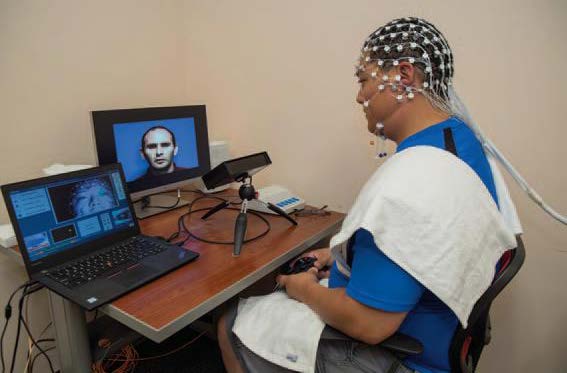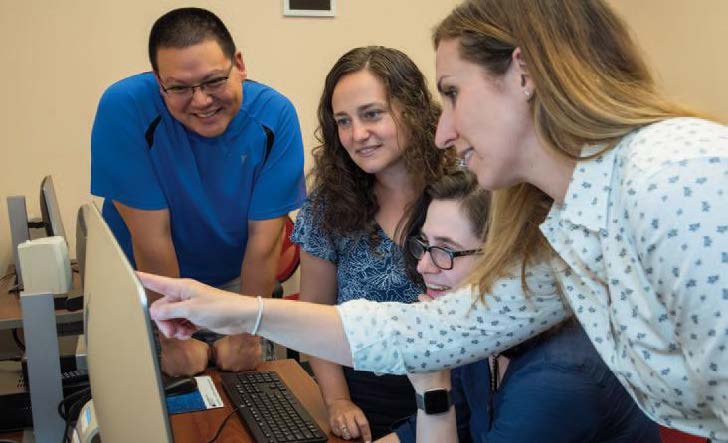URI RESEARCHERS EMBARK ON AUTISM STUDY WITH YALE, UCONN-AFFILIATED HASKINS LABS
Professors at the University of Rhode Island's new Collaborative Cognitive Neuroscience Lab ( web.uri.edu/chs/ccnl) are partnering with research scientists, Julia Irwin, Ph.D., and Nicole Landi, Ph.D., at Haskins Laboratories to better understand how children with autism spectrum disorder (ASD) learn language. Haskins is a private, non-profit research institute located in New Haven affiliated with Yale University and the University of Connecticut. Specifically, researchers will study how children with autism integrate visual information with what they hear compared to their typically-developing peers and how that affects their ability to learn language.
The University of Rhode Island's portion of the study, led by Assistant Professors of Communicative Disorders Alisa Baron and Vanessa Harwood, will focus on children, ages 10 through 18, with autism spectrum disorder. The study will incorporate electroencephalogram (EEG) sensors that monitor brain activity with eye-tracking technology to determine the level of audio-visual integration occurring as children observe human and computer-animated faces speaking.
"One way we learn language is by looking at people's faces and expressions and watching how their mouths move in addition to listening to what they are saying," said Baron. "In children with autism, we find that they have difficulty making eye contact or looking at peoples' faces as they speak. So they are missing out on critical information regarding language and communication."
URI will work through its Speech and Hearing Center as well as through the Rhode Island Consortium on Autism Research and Treatment ( autismri.org) to recruit participants. Recruitment is expected to begin late summer. Researchers will work with participants to acclimate them to the research process. Study participants will be required to participate in several sessions, which will include behavioral testing and an experimental portion.
"This is a very special population and we appreciate their willingness to be a part of this study. We want to make certain that we are doing everything we can to ensure their comfort and successful participation," said Harwood. "Our goal for the end result of this study is to develop effective interventions that will support and reinforce those types of looking behaviors that may help improve language processing."
In addition to recruiting children with ASD, researchers also invite parents of children with autism to participate in the study to learn more about how they process language. The Collaborative Cognitive Neuroscience Lab at the University of Rhode Island's College of Health Sciences ( web.uri.edu/chs) is a multidisciplinary team of researchers dedicated to translational research that bridges innovative neuroscience with clinical practice. The lab draws from multiple disciplines including communicative disorders, psychology, neuroscience, education, kinesiology and foreign language.
In addition to its formal affiliations with the University of Connecticut and Yale University, Haskins Laboratories maintains collaborations and partnerships with institutions around the world. This is the first collaboration between Haskins and URI around autism. Added Baron and Harwood, "We are grateful for this partnership and the opportunity to contribute in a meaningful way to moving autism research and interventions forward. We look forward to a long and successful relationship." •
Parents who are interested in finding out more about how they or their children can participate should reach out to ccnl@etal.uri.edu


FACE TIME: (Above, left to right) Undergraduate Marland Chang, Assistant Professor Alisa Baron, graduate student Jillian Caduto and Assistant Professor Vanessa Harwood. Baron and Harwood are partnering with research scientists at Haskins Laboratories to study how children with autism spectrum disorders learn language; (Right) Chang testing EEG sensors and eye-tracking technology as part of a dry run for research on how children with autism integrate visual information with what they hear. (URI photos/Nora Lewis)